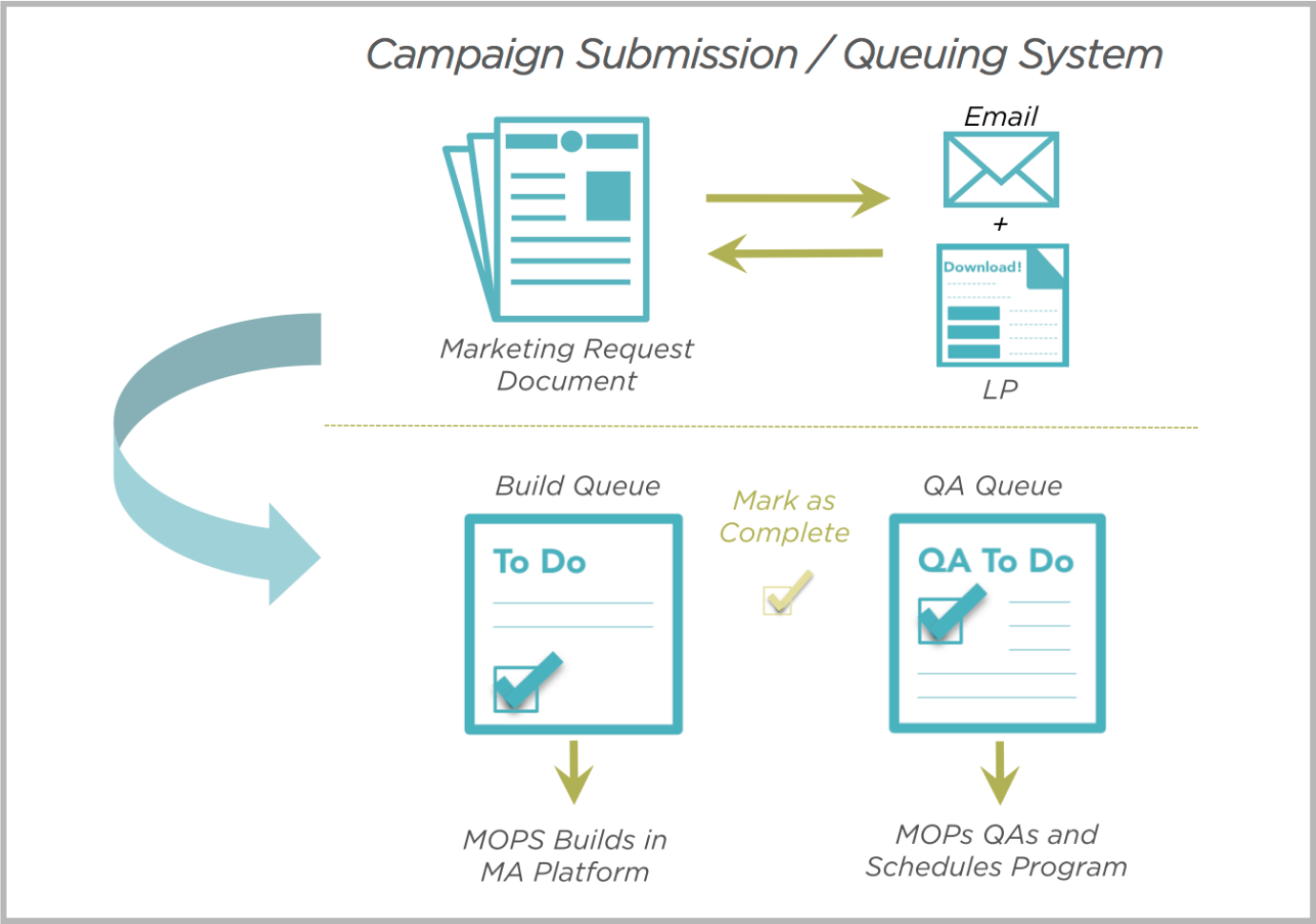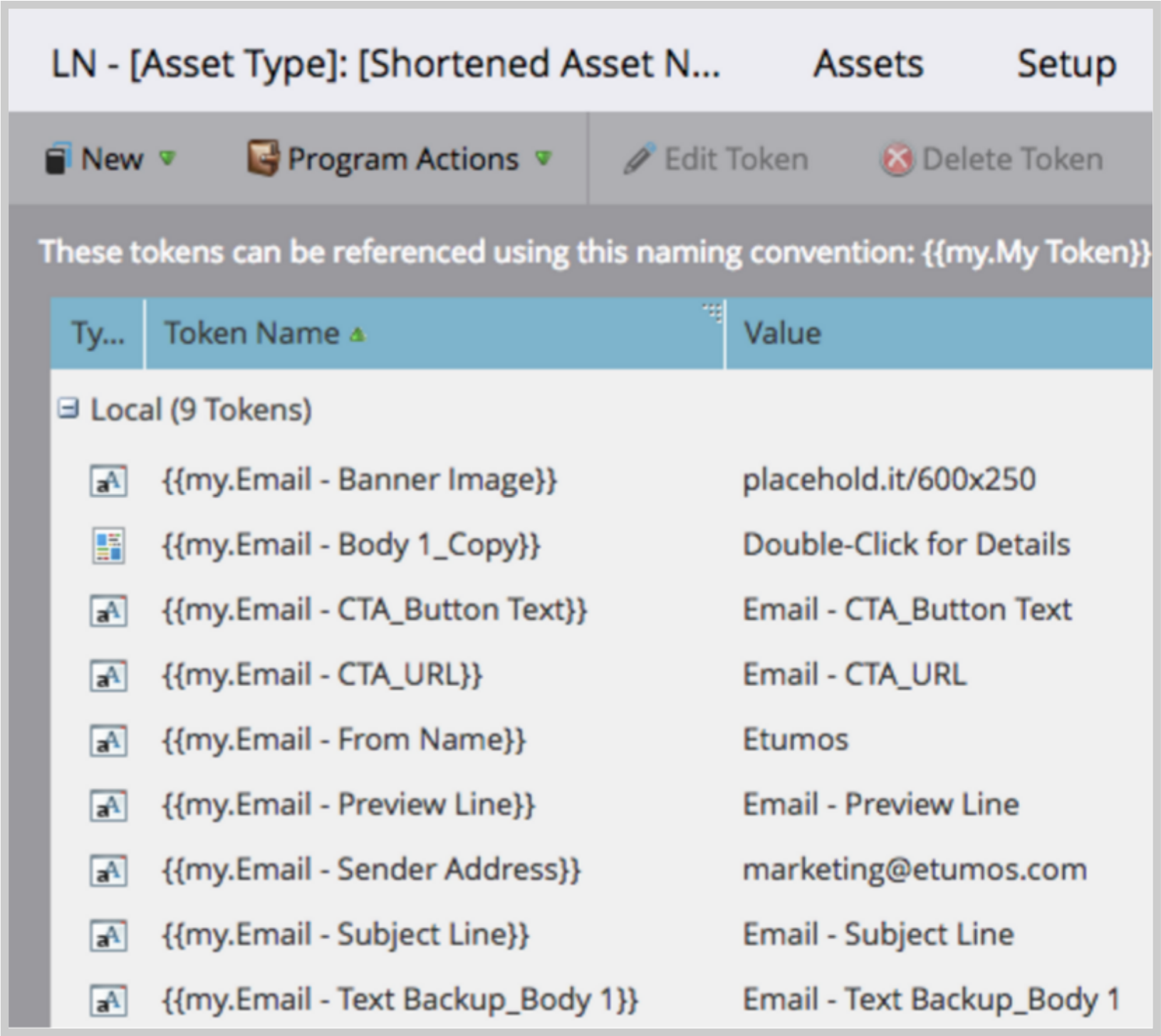To scale marketing efforts, both in the amount of marketing communications that you’re putting out and the database size that you’re addressing, you need to expand your marketing organization to incorporate new functions: specialized marketing operations.
In our last blog post, we discussed scaling your team for operational success. However, expanding your marketing organization from a small team of generalized Marketing Managers to include a specialized team that performs Marketing Operations introduces growing pains. Marketing Ops Specialists require specific requirements to execute a program.
Marketing Managers might be used to submitting requirements via an email, or even worse, building and sending communications themselves. The former often leads to poorly defined or incomplete requirements being submitted to the Marketing Ops Specialist. The latter can introduce errors into programs when the Managers don’t have the comprehensive training necessary to use your Marketing Automation Platform, and it circumvents an iterative process that catches problems before they reach your prospects.
What Is a Centralized Submission Process?
A centralized submission process is a fundamental method of scaling marketing operations and marketing efforts. It establishes QA processes, eliminates errors from the building processes, and solidifies Service Level Agreements (SLAs) between marketing and marketing operations. It is the essential tool for scaling marketing in a complex enterprise organization.
In a centralized submission process, Marketing Managers input their copy, images, schedule requirements, and so on, into a worksheet in your project management system, then submit it to the Marketing Ops Team. The worksheet has been developed to align with tokenized program templates. Individual sections, such as titles and headlines and body copy, are mapped to individual program tokens for the marketing programs.
The following illustrates how a centralized submission process works.

Why a Centralized Submission Process is Essential to Marketing and the Company
A centralized submission process is a great way to combat last-minute requests from Marketing Managers, over-communication to prospects, rogue marketing programs, inadequate QA for marketing communications, and scaling inefficiencies of the marketing operations teams.
It standardizes the way Marketing Managers send their requirements to the Marketing Ops Specialists so that all relevant information is gathered before the campaign is implemented. It sets up an iterative relationship between the Manager and the Marketing Ops Specialist, which means errors are more likely to be caught and corrected before they reach your prospects’ eyes.
It also provides a level of governance that guards against rogue marketing requests that disrupt other campaigns, and ensures that the method by which you obtain campaign performance metrics is consistent.
Building out a centralized submission process is an iterative approach. Marketing Ops Specialists can build significantly faster when they have all of the build requirements consolidated in one place. Marketing Ops Architects can keep a steady eye on the speed that campaigns are being built, how SLAs are hit or missed, and refine program templates (and project management software) to smooth out problems as they come up between Marketing Managers and the Marketing Ops team.
How a Centralized Submission Process Works
The Marketing Manager submits a request that includes all collateral, assets, due dates, and the submitter’s name, through a project management system. The project management system alerts the Marketing Ops Specialist that a request has been submitted. The Marketing Ops Specialist reviews the information and, if necessary, consults with the Marketing Manager to clarify ambiguities or request additional information. When the program and assets are created, the Marketing Ops Specialist requests final approval from the Marketing Manager. Once the Marketing Manager approves the assets requested, the Marketing Ops Specialist executes the campaign.
With this process, you double the number of eyes on the campaign before its execution. If your organization is quite large and brand conscious, you can also include a QA by your brand team in this step.
Setting Up a Centralized Process
To set up a centralized submission process, do the following:
- Specify email and landing page templates. A submission process cannot be consistent and expeditious if each new request uses a different email or landing page template. Recommend 4 or 5 email templates and 2 or 3 landing page templates to your Marketing Managers. Ask them to approve the ones they want to use moving forward.
- Insert program tokens in editable sections of the approved email and landing page templates.
For example, data required for emails would include some of the following tokens:
This makes creating email and landing page assets turnkey. Go one step further by housing your email and landing page assets in a templated program. That way you can simply clone an entire program that contains not only the necessary elements for your marketing initiative but the tokens used for your email and landing pages.
To learn more about program templates, download: The Marketo Expert’s Guide to Program Templates
- Create a Request Worksheet for Your Marketing Managers. Now that you have tokenized approved templates, create a submission worksheet for your Marketing Managers. Include all the fields the Marketing Ops Specialists need in order to build the requested asset (copy, images, URL links), as well as options for approved templates. Marketing Managers complete the worksheets and send them via the project management system to your Marketing Ops team. Marketing Ops Specialists replace the token values with the content (copy, images, URL links) sent by the Marketing Manager. For example:

More advanced and scaled organizations can manage the progress of the program as it is being built between the project management software and the Marketing Automation Platform by using a program tag to specify where the program is in the build process—drafting, ready for review, QAing, ready to deploy, and deployed.
What Should You Do Next?
Making sure you have program templates in Marketo is a prerequisite for a well-orchestrated centralized campaign building process. You can read how to do that in our guide on program templates here. If you want some pointers on how those work when fully tokenized, you can request a demo with us and we can walk you through the creation process in a best-practices, fully-optimized Marketo instance.







